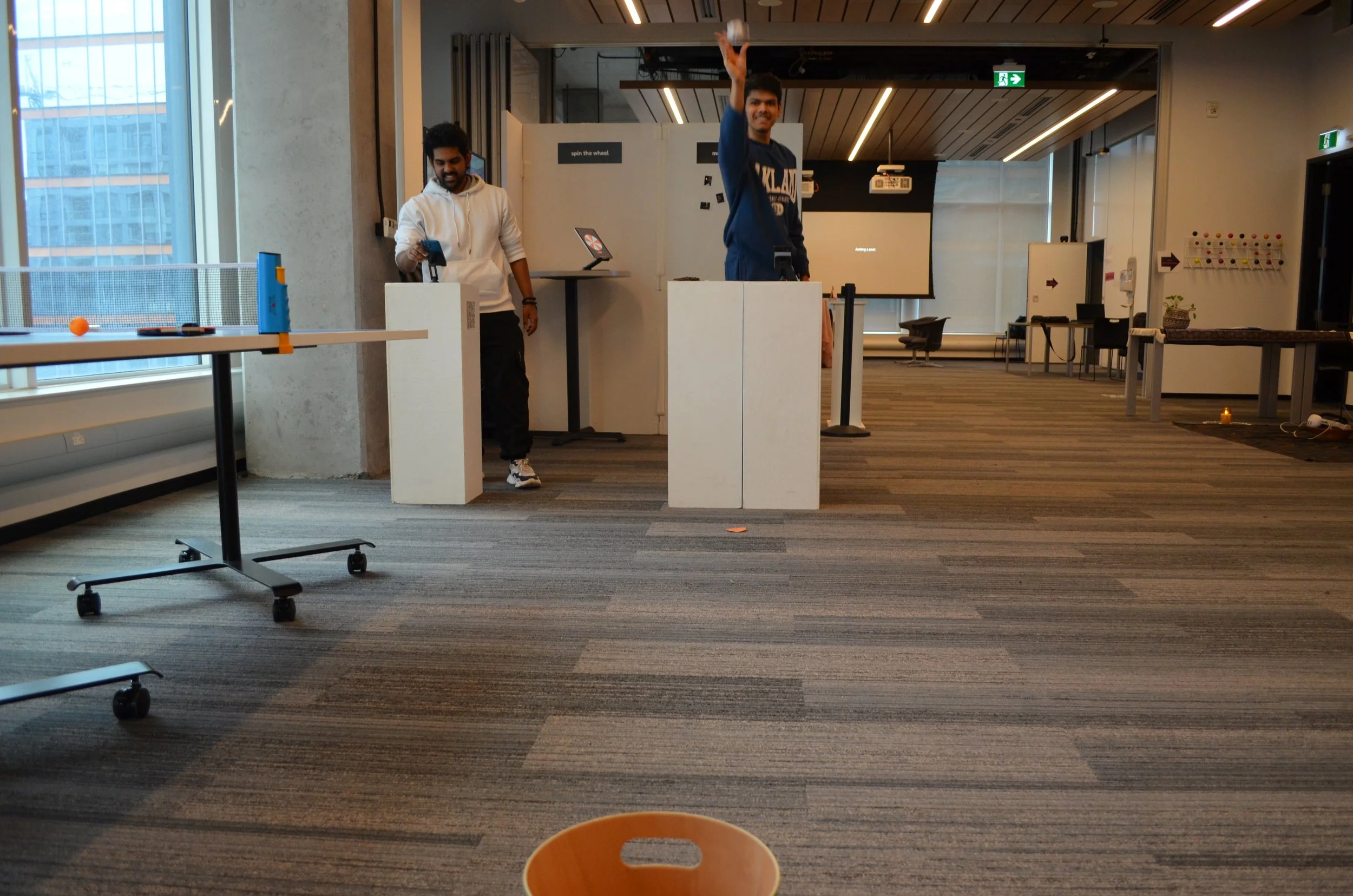Let’s Grab A Match!
digital tools enhance long-term sports engagement
Kunal Devi and Nikhil Thomas
Project Description
Over 50% of Canadians aged 15 and older participate in sports annually, with over 80% engaging recreationally. However, participation is often unstructured, relying on online groups, drop-in sessions, and community centers, which may impact motivation and consistency. This project explores how digital tools can enhance long-term sports engagement among recreational players.
Using the Double Diamond methodology, we examine the challenges of sustaining participation. A diary study identified key barriers, while iterative prototyping allowed us to test engagement strategies, including forming a sports club, exploring gamification elements like a digital pet, and introducing personalized goal-setting features. User interviews provided deeper insights into individual needs.
By incorporating Self Determination Theory (SDT), and its related mini theories —basic psychological needs theory (BPNT) and Goal Setting Theory (GST), our research proposes an app-based solution that may enhance motivation and social connection, improving consistency and enjoyment.





BIO
Kunal Devi:
I graduated as an industrial designer and later worked as a Junior UI UX designer. I specialise in designing digital experiences for young startups (0 to 1). My interests also lie in voice-triggered interfaces, interactive installations, augmented reality experiences and entrepreneurship. Apart from work, I love playing table tennis, learning to play the flute and sketching figure drawings.
Nikhil Thomas:
Nikhil Thomas is a designer, artist, and maker from Toronto with a background in industrial design with over four years of industry experience. He has worked with both MNCs and startups across diverse domains, including UI/UX, website design,home appliances, IoT devices, packaging, branding, and art installations. He has a strong interest in techonoly and the intersection of the digital and the physical, exploring emerging fields such as mixed reality, wearable electronics, and interactive interfaces.


